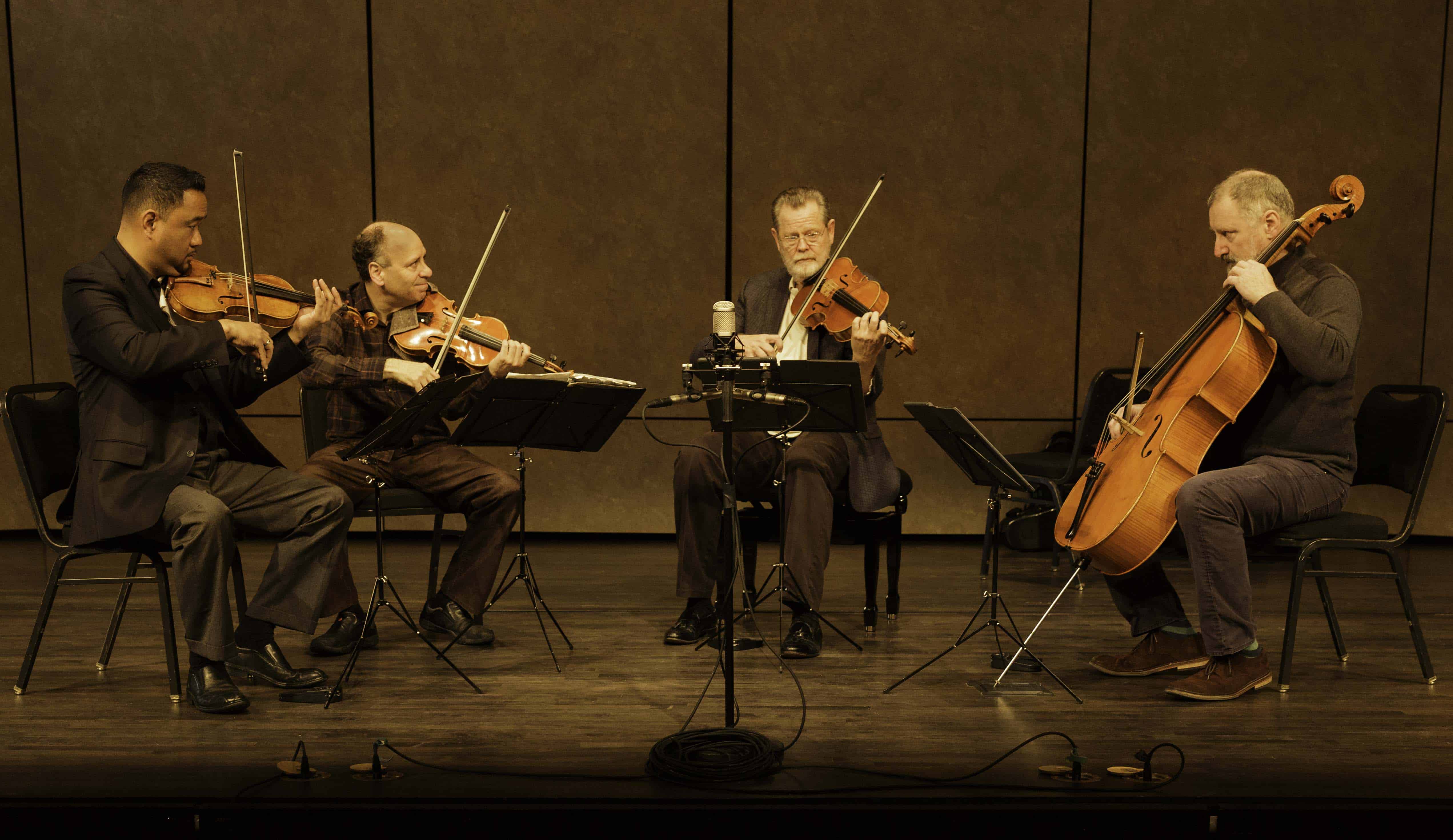Eric Bromberger offers the following background on The Alexander String Quartet’s March 30, 2018 performance of Haydn’s The Seven Last Words of Our Saviour on the Cross at Grace Cathedral in San Francisco:
Haydn may have claimed that his thirty years as kapellmeister to the Esterhazy princes forced him to work in isolation, but from that quiet isolation his fame spread steadily across Europe. One of the clearest signs of this came in 1784 when Haydn received a handsome commission from Paris for six symphonies, and he worked on these“Paris” Symphonies (Nos. 82-87) during the years 1785-86. At exactly this same moment came an even more remarkable commission. A Spanish cleric wrote to Haydn to ask for music to accompany the reading–on Good Friday, 1787–of the seven final statements of Christ on the cross.
Haydn rarely commented on his music, but in 1801 he recalled the circumstances of this work’s creation, and it is worth quoting him at length:
About fifteen years ago I was requested by a canon of Cadíz to compose instrumental music on the Seven Words of Jesus on the Cross. It was the custom of the Cathedral of Cadíz to produce an oratorio every year during Lent, the effect of the performance being not a little enhanced by the following circumstances. The walls, windows, and pillars of the church were hung with black cloth, and only a large lamp, hanging from the center of the roof, broke the solemn obscurity. At midday, the doors were closed and the ceremony began. After an appropriate prelude, the bishop ascended the pulpit, pronounced one of the Seven Words and delivered a discourse thereon. This ended, he left the pulpit and knelt prostrate before the altar. This pause was filled with music. The bishop then in like manner pronounced the second word, then the third, and so on, the orchestra falling in at the conclusion of the discourse.
It should further be noted that the Good Friday observances in Cadiz took place not in the cathedral but in the Chapel of Santa Cueva, a cave carved in a hillside beneath the cathedral, so this music was first performed in a profound darkness.
Haydn wrote this set of musical meditations for large orchestra (one that included four horns and timpani), and it was performed in Cadíz on April 6, 1787. But it is a telling indication of the fame of the 55-year-old composer that it was performed almost simultaneously in both Vienna and Bonn; in fact, those two performances took place at the end of March and so preceded the Cadíz ceremony (and it is likely that one of the performers in the Bonn orchestra was a 16-year-old violist named Beethoven). Alert to the commercial possibilities of this music, Haydn quickly arranged it for string quartet–the version heard on this program–and oversaw its transcription for solo piano; some years later–in 1796 as he was beginning work on his oratorios–he made a further arrangement for soloists, chorus, and expanded orchestra. He regarded The Seven Last Words of Christ as one of the greatest successes he ever had as a composer, and he conducted it at his last public performance, in 1803.
There is no question about Haydn’s devout Catholic faith: he inscribed the words Laus Deo (“Praise God”) at the end of the manuscripts of all of his symphonies. But while he welcomed this commission, he found it a challenge, noting that “it was not an easy matter to compose seven Adagios to last ten minutes each, and follow one after the other without fatiguing the listener . . .” Uncertain how to proceed, he consulted his friend, the Abbé Maximilian Stadler, who suggested building the main theme of each movement on the rhythm of its Latin text, and this proved a useful procedure.
Haydn said of The Seven Last Words: “Each [movement], or rather each setting of the text, is expressed only by instrumental music, but in such a way that it creates the most profound impression on even the most inexperienced listener.” The challenge for him as a composer was to capture the spirit of these solemn words and to create music suitable for meditation on each of them, yet still to engage a listener’s interest across the span of seven slow movements. He addressed the last of these in several ways: by making sharp contrasts between the character of the movements (some are lyric and lamenting, others dramatic), by varying keys effectively, and by contrasting sonorities–muting the strings for one movement, using pizzicato at other points. Haydn frames these seven slow movements with contrasted outer movements. He establishes a suitably solemn atmosphere with an Introduction in D minor that he marks Maestoso ed Adagio, and he concludes with a musical depiction of the earthquake that rocked Calvary after the crucifixion. At last we have a fast movement–it is marked Presto e con tutta la forza–and it brings The Seven Last Words to a conclusion that is satisfying both emotionally and musically.
Haydn’s arrangement of this orchestral music for string quartet is particularly successful, and the music is most often heard today in this version. At the time he made this transcription, he had already written 43 of his 83 string quartets, and the music is beautifully conceived for the four instruments in this version. The seven meditative movements do not really require detailed description. Each is in sonata form, which allows Haydn the scope to develop the implications of his opening theme, much as a meditation expands on its fundamental idea. These movements do not offer scene-painting, but instead are emotional correlatives to the words of the dying Christ, and listeners might best approach them as did the listeners at the first performance in Cadíz: by reading the text of each movement and being aware of it as they listen to Haydn’s musical response.
—Eric Bromberger

